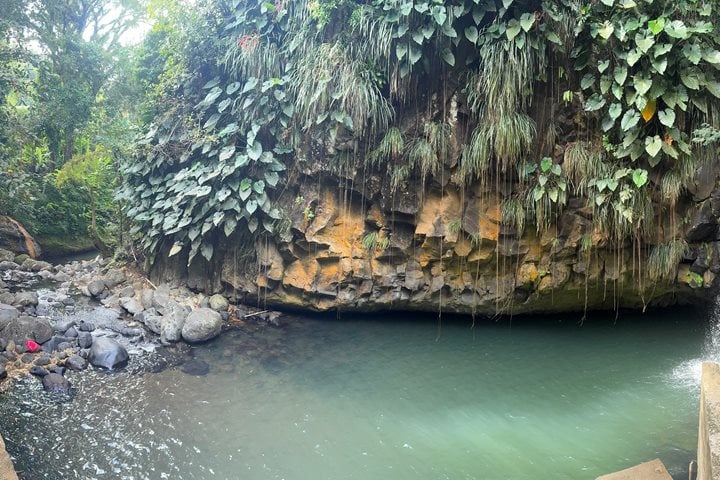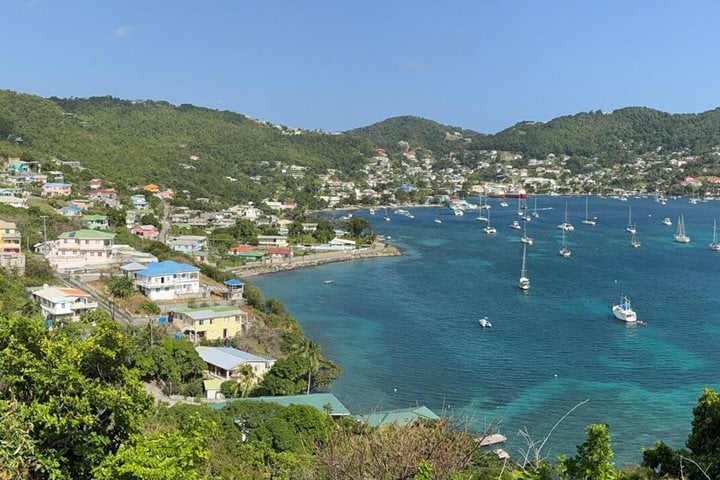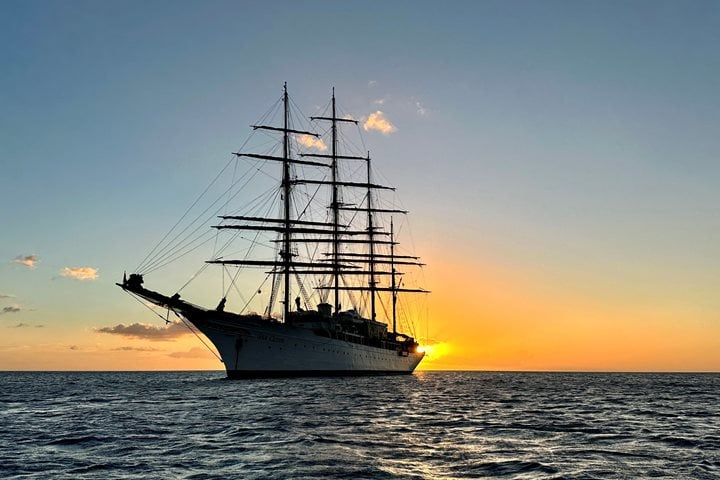We sailed today from Carriacou to the lushly beautiful island of St. Lucia. There is a startling contrast between the aridity of Carriacou and the profusion of all shades of green in St. Lucia, where the high mountains trap moisture in the clouds. (And it did rain for a few minutes this morning.
This small island, approximately 200 square miles with a population of 180,000 is the birthplace of two Nobel Laureates, Arthur Lewis in economics and Derek Walcott in literature—a real testimony to the quality of the educational system. They both attended the same island schools!
We anchored in Soufrière Bay just to the north and east of the great Pitons. Soufrière (meaning sulfur air) is dramatically situated at the west end of an ancient caldera that blew the western ridge of a mountain chain away about 39,000 years ago. There is a deep trench in the bay, which makes anchoring difficult and one can easily lose an anchor if not dropped precisely. The depth is a result of a volcanic collapse, so we were actually anchored in a caldera.
As we boarded Zodiacs into the small pier, we were privileged to see a double rainbow—picture-perfect! Once ashore, we boarded three minivans for the short ride to the interior of the caldera where the hot gasses, molten mud, and water and rock bubble. Here we were able to see and smell—for the sulfuric gases (hydrogen-sulfide) leave a strong smell in the air—the seismic activity that created these Lesser Antilles. The guides pointed out that as long as you can smell the sulfuric gas, it is not dangerous, but if there is no smell, it is dangerous.
All of the islands we will visit are the products of volcanic activity–with the single exception of Barbados (which is coral limestone). John, our very knowledgeable guide at the caldera, was well-versed in the geology and took us to an overlook where we could look right at the dark, bubbling, sulfurous mud as it hissed and exploded.
Our next stop was the Diamond Botanical Gardens, one of the unsung gems of the Caribbean. Plants of every sort abound and our guide Paddia was able to point out all the most interesting varieties. I was especially taken by the bamboo, which is the national plant of St. Lucia–a plant that can grow eight inches a day and reach 50 feet tall and 6 inches in diameter. We were in these wonderful gardens for about an hour and after our visit we returned to our vans for the very short drive to the center of Soufrière.
Our next stop was Hummingbird Beach where the water was very clear and the snorkeling was very good. Even those who did not snorkel enjoyed swimming in the limpid, turquoise sea. We returned to Sea Cloud by 1 p.m. We furled sails for the last time and sailed by the Pitons until 3:30 p.m. when we reefed the sails.
Tonight, we had a special treat as Tom O’Brien played the exciting video, “Around Cape Horn,” a short film made by Captain Irving Johnson in 1928 as he sailed around Cape Horn in a savage storm. Captain Johnson’s narration was added to his video, almost 50 years later. I never tire of hearing him breathlessly talk about “a number one storm.”
The Captain hosted his cocktail party, invited us to return “home” to Sea Cloud and then we adjourned to dinner. As we slept, the ship sailed into the wind en route to Barbados.









